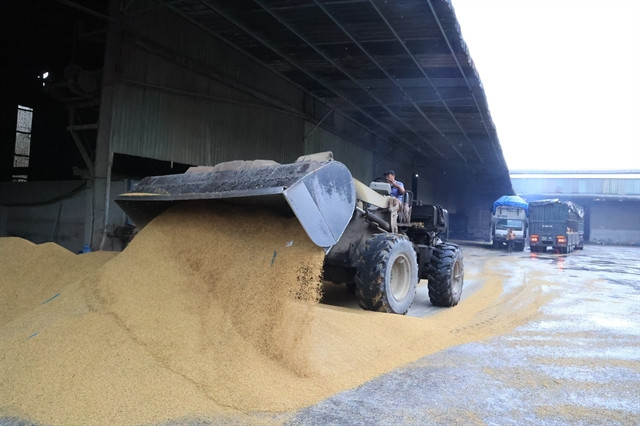 |
| Financial leasing began to appear in Việt Nam in 1998 and has since become diverse in terms of leasing assets such as machinery, equipment and automobiles. — VNA/VNS Photo Minh Hưng |
It was critical to create an enabling environment to promote the development of financial leasing in Việt Nam as a channel to supply capital to the economy, according to General Secretary of the Việt Nam Financial Leasing Association (VILEA) Phạm Xuân Hoè.
Hoè said that financial leasing has high potential in Việt Nam’s dynamic economy with more than 800,000 enterprises and more than 5 million business households.
He cited statistics that the ratio to GDP remained modest at 0.4 per cent, compared to 22 per cent in the US and 18 per cent in China.
More than 90 per cent of small and medium sized enterprises in developed economies like the US, Japan and the Republic of Korea used financial leasing for production lines and equipment. The global outstanding loans are estimated at more than US$1.4 trillion.
Although global uncertainties cloud the economic outlook, there are opportunities for financial leasing from stable macroeconomies, hastened public investment disbursement, green economy, circular economy and emerging industries, which pushed up demand for capital leasing, Hoè said.
As Việt Nam remains an attractive destination for foreign direct investment (FDI) companies accustomed to financial leasing services, there is significant room for growth.
The amended Law on Credit Institutions, coming into force from the beginning of July, will provide a legal framework for the development of financial leasing services, Hoè said, adding that outstanding loans of financial leasing are projected to expand at 20 per cent to around VNĐ45 trillion by the end of 2024.
Financial leasing is considered an optimal method of helping businesses access capital without mortgaging assets. However, enterprises in Việt Nam are not familiar with financial leasing, Hoè said.
To promote the development of financial leasing, Hoè said it is necessary to improve the legal framework with detailed regulations about who can access financial leasing services and safety ratio for risk management.
A decree guiding the implementation of financial leasing services in line with the amended Law on Credit Institutions must be completed and issued early.
Financial leasing began to appear in Việt Nam in 1998 and has since become diverse in terms of leasing assets.
A financial leasing is a type of commercial lease in which a finance company is the legal owner of an asset, and the user rents the asset.
Six VILEA’s member companies currently have total assets worth more than VNĐ41 trillion, a rise of 10.65 per cent compared to the end of 2022. The total raised capital reached VNĐ19.8 trillion, an increase of 25.76 per cent – the rate which doubled the credit growth rate of the banking system.
The total outstanding loans of member financial leasing companies were estimated at VNĐ37.2 trillion, up by 13.75 per cent against the end of 2022, with more than 8,400 contracts.
Leasing services are diverse with the most popular assets being automobiles, construction and mining machineries, medical devices and production lines.
Specially, the ratio of bad debt is controlled at below 1 per cent. — VNS